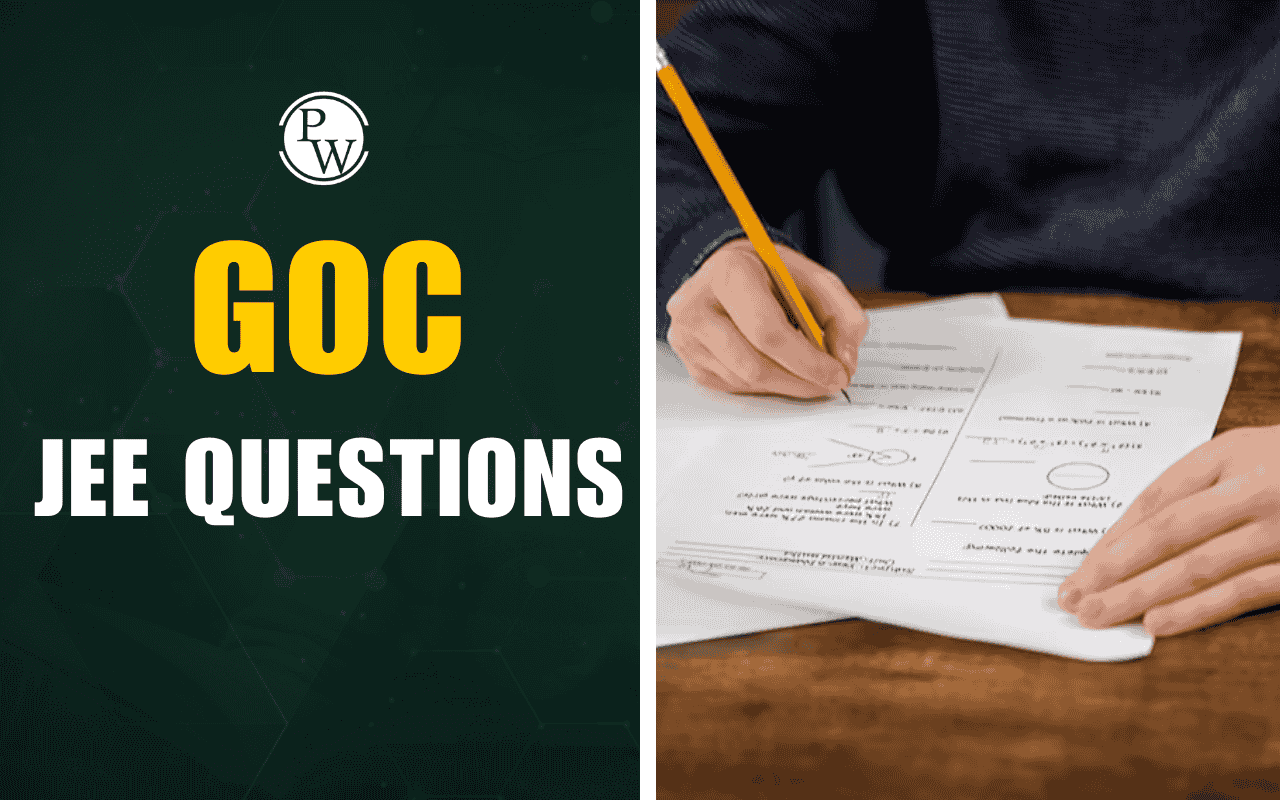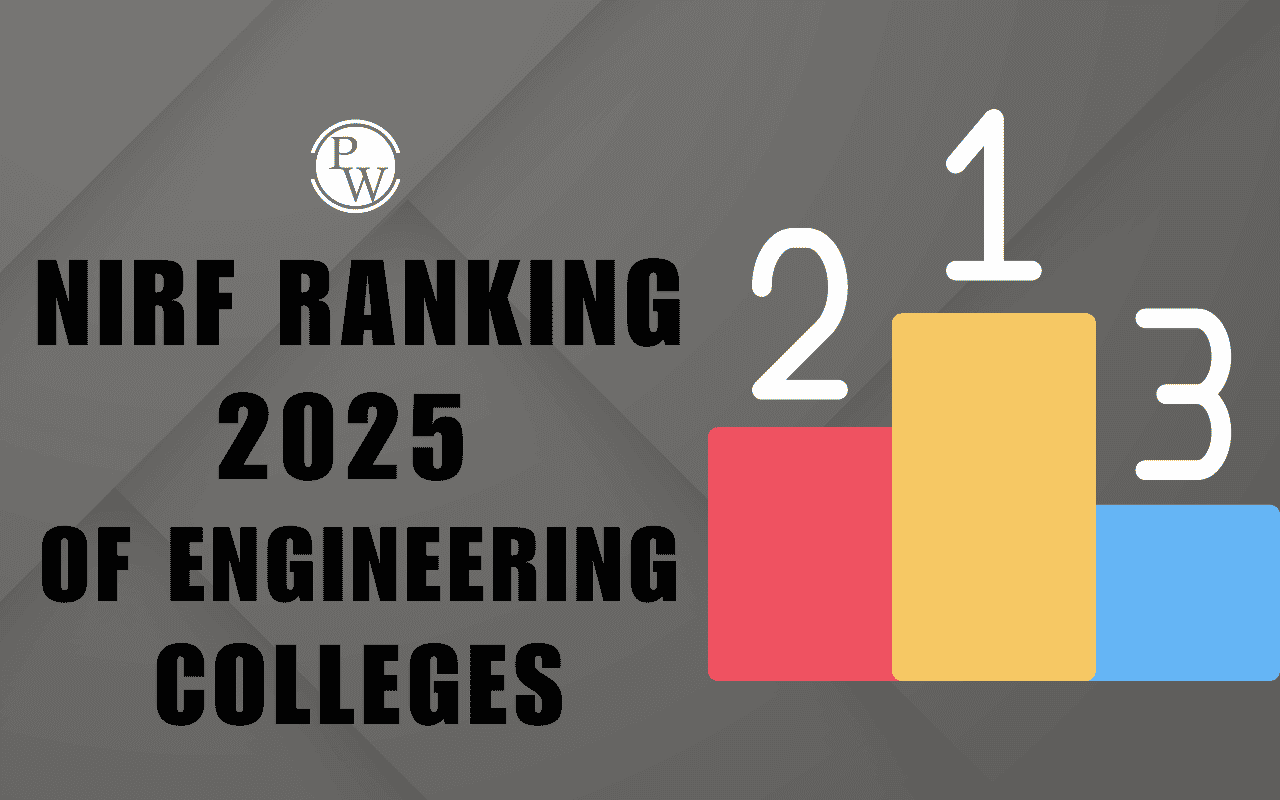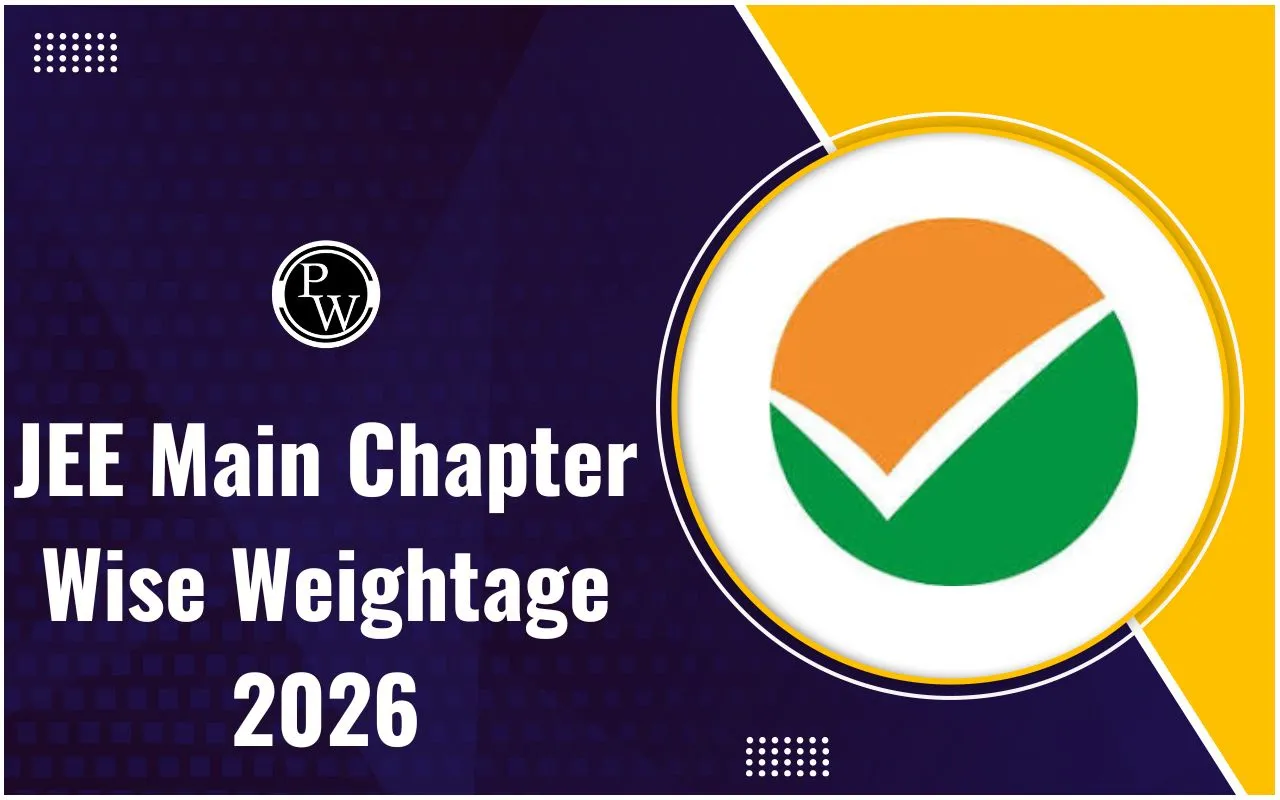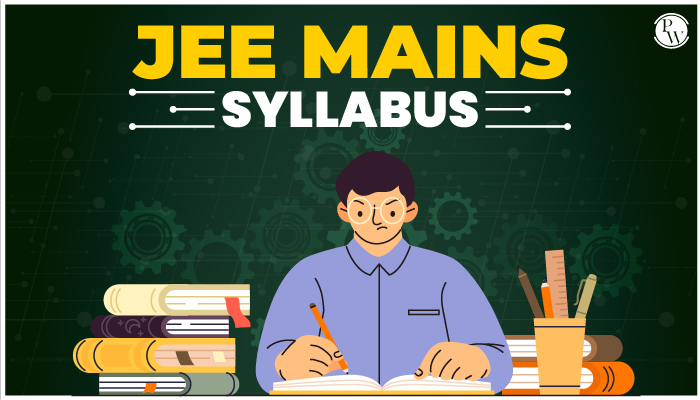
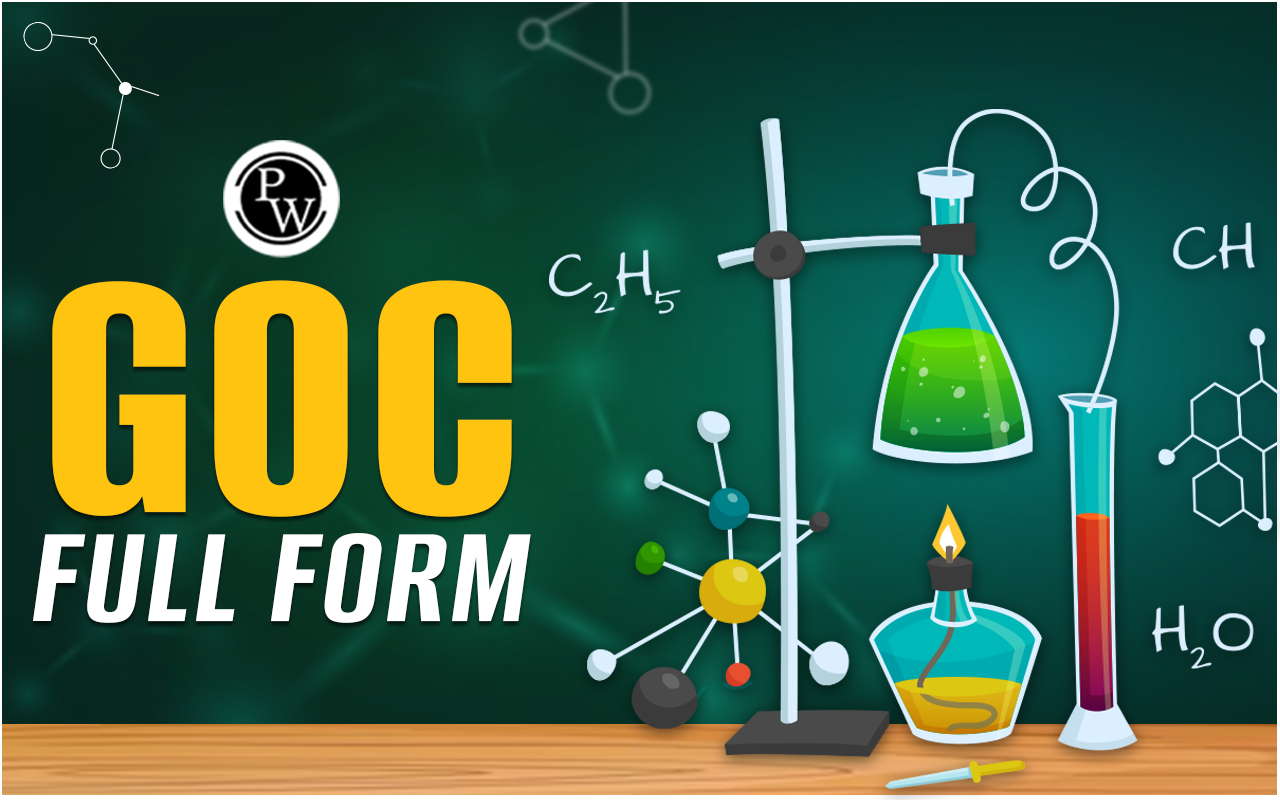
GOC Full Form
GOC Full Form : The general organic chemistry is an important concept in chemistry. Candidates learn about organic compounds' important structure and bonding's, electronic effects, stereochemistry, reaction mechanisms, functional groups, and name reactions. The GOC (General Organic Chemistry)is an important topic for JEE Main and JEE Advanced both.JEE Main Syllabus 2024 For GOC (General Organic Chemistry)
JEE Main Syllabus 2024 For GOC : Candidates can check the important Chapters in JEE Main syllabus 2024 for General Organic chemistry in the table below.| JEE Main Syllabus 2024 For GOC (General Organic Chemistry) | |
| Topics | Subtopics |
| UNIT 13: PURIFICATION AND CHARACTERISATION OF ORGANIC COMPOUNDS | Purification – Crystallization, sublimation, distillation, differential extraction, and chromatography – principles and their applications. Qualitative analysis – Detection of nitrogen, sulphur, phosphorus, and halogens. Quantitative analysis (basic principles only) – Estimation of carbon, hydrogen, nitrogen, halogens, sulphur, and phosphorus. Calculations of empirical formulae and molecular formulae: Numerical problems in organic quantitative analysis, |
| UNIT 14:SOME BASIC PRINCIPLES OF ORGANIC CHEMISTRY | Tetravalency of carbon: Shapes of simple molecules – hybridization (s and p): Classification of organic compounds based on functional groups: and those containing halogens, oxygen, nitrogen, and sulphur; Homologous series: Isomerism – structural and stereoisomerism. Nomenclature (Trivial and IUPAC) Covalent bond fission – Homolytic and heterolytic: free radicals, carbocations, and carbanions; stability of carbocations and free radicals, electrophiles, and nucleophiles. Electronic displacement in a covalent bond – Inductive effect, electromeric effect, resonance, and hyperconjugation. Common types of organic reactions – Substitution, addition, elimination, and rearrangement. |
| UNITS 15: HYDROCARBONS | Classification, isomerism, IUPAC nomenclature, general methods of preparation, properties, and reactions. Alkanes – Conformations: Sawhorse and Newman projections (of ethane): Mechanism of halogenation of alkanes. Alkenes – Geometrical isomerism: Mechanism of electrophilic addition: addition of hydrogen, halogens, water, hydrogen halides (Markownikoffs and peroxide effect): Ozonolysis and polymerization. Alkynes – Acidic character: Addition of hydrogen, halogens, water, and hydrogen halides: Polymerization. Aromatic hydrocarbons – Nomenclature, benzene – structure and aromaticity: Mechanism of electrophilic substitution: halogenation, nitration. Friedel-Craft’s alkylation and acylation, directive influence of the functional group in monosubstituted benzene. |
| UNIT 16: ORGANIC COMPOUNDS CONTAINING HALOGENS | General methods of preparation, properties, and reactions; Nature of C-X bond; Mechanisms of substitution reactions. Uses; Environmental effects of chloroform, iodoform freons, and DDT. |
| UNIT 17: ORGANIC COMPOUNDS CONTAINING OXYGEN | General methods of preparation, properties, reactions, and uses. ALCOHOLS, PHENOLS, AND ETHERS Alcohols: Identification of primary, secondary, and tertiary alcohols: mechanism of dehydration. Phenols: Acidic nature, electrophilic substitution reactions: halogenation. nitration and sulphonation. Reimer – Tiemann reaction. Ethers: Structure. Aldehyde and Ketones: Nature of carbonyl group; Nucleophilic addition to >C=O group, relative reactivities of aldehydes and ketones; Important reactions such as – Nucleophilic addition reactions (addition of HCN. NH3, and its derivatives), Grignard reagent; oxidation: reduction (Wolf Kishner and Clemmensen); the acidity of -hydrogen. aldol condensation, Cannizzaro reaction. Haloform reaction, Chemical tests to distinguish between aldehydes and Ketones. Carboxylic Acids Acidic strength and factors affecting it, |
| UNIT 18: ORGANIC COMPOUNDS CONTAINING NITROGEN | General methods of preparation. Properties, reactions, and uses. Amines: Nomenclature, classification structure, basic character, and identification of primary, secondary, and tertiary amines and their basic character. Diazonium Salts: Importance in synthetic organic chemistry. |
| UNIT 19: BIOMOLECULES | General introduction and importance of biomolecules. CARBOHYDRATES – Classification; aldoses and ketoses: monosaccharides (glucose and fructose) and constituent monosaccharides of oligosaccharides (sucrose, lactose, and maltose). PROTEINS – Elementary Idea of -amino acids, peptide bond, polypeptides. Proteins: primary, secondary, tertiary, and quaternary structure (qualitative idea only), denaturation of proteins, enzymes. VITAMINS – Classification and functions. NUCLEIC ACIDS – Chemical constitution of DNA and RNA. Biological functions of nucleic acids. Hormones (General introduction) |
| UNIT 20: PRINCIPLES RELATED TO PRACTICAL CHEMISTRY | Detection of extra elements (Nitrogen, Sulphur, halogens) in organic compounds; Detection of the following functional groups; hydroxyl (alcoholic and phenolic), carbonyl (aldehyde and ketones) carboxyl, and amino groups in organic compounds. • The chemistry involved in the preparation of the following: Inorganic compounds; Mohr’s salt, potash alum. Organic compounds: Acetanilide, p-nitro acetanilide, aniline yellow, iodoform. • The chemistry involved in the titrimetric exercises – Acids, bases, and the use of indicators, oxalic-acid vs KMnO4, Mohr’s salt vs KMnO4 • Chemical principles involved in the qualitative salt analysis: Cations – Pb2+, Cu2+, Al3+, Fe3+, Zn2+, Ni2+, Ca2+, Ba2+, Mg2+ , NH4 + Anions- CO3 2−, S 2- ,SO4 2−, NO3- , NO2- , Cl- , Br- , I- ( Insoluble salts excluded). Chemical principles involved in the following experiments: 1. Enthalpy of solution of CuSO4 2. Enthalpy of neutralization of strong acid and strong base. 3. Preparation of lyophilic and lyophobic sols. 4. Kinetic study of the reaction of iodide ions with hydrogen peroxide at room temperature. |
JEE Advanced Syllabus 2024 For GOC (General Organic Chemistry)
JEE Advanced Syllabus 2024 For GOC : Candidates can check the important Chapters In JEE Advanced Syllabus 2024 For General Organic Chemistry.| JEE Advanced Syllabus 2024 For GOC (General Organic Chemistry) | |
| Topics | Sub Topics |
| Concepts | Hybridisation of carbon; ? and ?-bonds; Shapes of simple organic molecules; Structural and geometrical isomerism; Optical isomerism of compounds containing up to two asymmetric centres, (R, S and E, Z nomenclature excluded); IUPAC nomenclature of simple organic compounds (only hydrocarbons, mono-functional and bi-functional compounds); Conformations of ethane and butane (Newman projections); Resonance and hyperconjugation; Keto-enoltautomerism; Determination of empirical and molecular formulae of simple compounds (only combustion method); Hydrogen bonds: definition and their effects on physical properties of alcohols and carboxylic acids; Inductive and resonance effects on acidity and basicity of organic acids and bases; Polarity and inductive effects in alkyl halides; Reactive intermediates produced during homolytic and heterolytic bond cleavage; Formation, structure and stability of carbocations, carbanions and free radicals. |
| Preparation, properties and reactions of alkanes | Homologous series, physical properties of alkanes (melting points, boiling points and density); Combustion and halogenation of alkanes; Preparation of alkanes by Wurtz reaction and decarboxylation reactions. |
| Preparation, properties and reactions of alkenes and alkynes | Physical properties of alkenes and alkynes (boiling points, density and dipole moments); Acidity of alkynes; Acid catalysed hydration of alkenes and alkynes (excluding the stereochemistry of addition and elimination); Reactions of alkenes with KMnO4 and ozone; Reduction of alkenes and alkynes; Preparation of alkenes and alkynes by elimination reactions; Electrophilic addition reactions of alkenes with X2, HX, HOX and H2O (X=halogen); Addition reactions of alkynes; Metal acetylides. |
| Reactions of benzene | Structure and aromaticity; Electrophilic substitution reactions: halogenation, nitration, sulphonation, Friedel-Crafts alkylation and acylation; Effect of o-, m- and p-directing groups in monosubstituted benzenes. |
| Phenols | Acidity, electrophilic substitution reactions (halogenation, nitration and sulphonation); Reimer-Tieman reaction, Kolbe reaction. |
| Characteristic reactions of the following (including those mentioned above) | Alkyl halides: rearrangement reactions of alkyl carbocation, Grignard reactions, nucleophilic substitution reactions; Alcohols: esterification, dehydration and oxidation, reaction with sodium, phosphorus halides, ZnCl2/concentrated HCl, conversion of alcohols into aldehydes and ketones; Ethers: Preparation by Williamson’s Synthesis; Aldehydes and Ketones: oxidation, reduction, oxime and hydrazone formation; aldol condensation, Perkin reaction; Cannizzaro reaction; haloform reaction and nucleophilic addition reactions (Grignard addition); Carboxylic acids: formation of esters, acid chlorides and amides, ester hydrolysis; Amines: basicity of substituted anilines and aliphatic amines, preparation from nitro compounds, reaction with nitrous acid, azo coupling reaction of diazonium salts of aromatic amines, Sandmeyer and related reactions of diazonium salts; carbylamine reaction; Haloarenes: nucleophilic aromatic substitution in haloarenes and substituted haloarenes (excluding Benzyne mechanism and Cine substitution). |
| Carbohydrates | Classification; mono- and di-saccharides (glucose and sucrose); Oxidation, reduction, glycoside formation and hydrolysis of sucrose. |
| Amino acids and peptides | General structure (only primary structure for peptides) and physical properties |
| Properties and uses of some important polymers | Natural rubber, cellulose, nylon, teflon and PVC. |
| Practical organic chemistry | Detection of elements (N, S, halogens); Detection and identification of the following functional groups: hydroxyl (alcoholic and phenolic), carbonyl (aldehyde and ketone), carboxyl, amino and nitro; Chemical methods of separation of monofunctional organic compounds from binary mixtures. |
GOC Full Form: FAQs
Q1. What is the full form of GOC?
Ans: The full form of GOC in organic chemistry is General Organic Chemistry.
Q2. Will the JEE Main exam contain topics from general organic chemistry?
Ans: Yes, GOC is an important topic for both the JEE Main and JEE Advanced 2024 exams.
Q3. How many marks were allotted to General organic chemistry in JEE Advanced 2024?
Ans: The General organic chemistry holds 8 marks in paper 1.
🔥 Trending Blogs
Talk to a counsellorHave doubts? Our support team will be happy to assist you!

Check out these Related Articles
Free Learning Resources
PW Books
Notes (Class 10-12)
PW Study Materials
Notes (Class 6-9)
Ncert Solutions
Govt Exams
Class 6th to 12th Online Courses
Govt Job Exams Courses
UPSC Coaching
Defence Exam Coaching
Gate Exam Coaching
Other Exams
Know about Physics Wallah
Physics Wallah is an Indian edtech platform that provides accessible & comprehensive learning experiences to students from Class 6th to postgraduate level. We also provide extensive NCERT solutions, sample paper, NEET, JEE Mains, BITSAT previous year papers & more such resources to students. Physics Wallah also caters to over 3.5 million registered students and over 78 lakh+ Youtube subscribers with 4.8 rating on its app.
We Stand Out because
We provide students with intensive courses with India’s qualified & experienced faculties & mentors. PW strives to make the learning experience comprehensive and accessible for students of all sections of society. We believe in empowering every single student who couldn't dream of a good career in engineering and medical field earlier.
Our Key Focus Areas
Physics Wallah's main focus is to make the learning experience as economical as possible for all students. With our affordable courses like Lakshya, Udaan and Arjuna and many others, we have been able to provide a platform for lakhs of aspirants. From providing Chemistry, Maths, Physics formula to giving e-books of eminent authors like RD Sharma, RS Aggarwal and Lakhmir Singh, PW focuses on every single student's need for preparation.
What Makes Us Different
Physics Wallah strives to develop a comprehensive pedagogical structure for students, where they get a state-of-the-art learning experience with study material and resources. Apart from catering students preparing for JEE Mains and NEET, PW also provides study material for each state board like Uttar Pradesh, Bihar, and others
Copyright © 2025 Physicswallah Limited All rights reserved.

